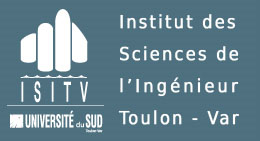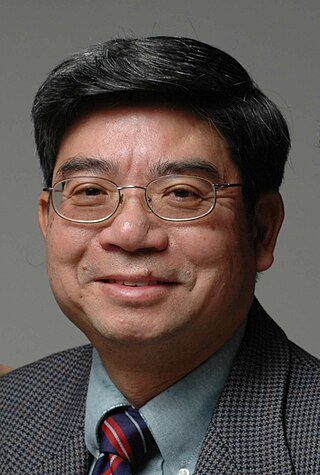Related Research Articles

Naval architecture, or naval engineering, is an engineering discipline incorporating elements of mechanical, electrical, electronic, software and safety engineering as applied to the engineering design process, shipbuilding, maintenance, and operation of marine vessels and structures. Naval architecture involves basic and applied research, design, development, design evaluation (classification) and calculations during all stages of the life of a marine vehicle. Preliminary design of the vessel, its detailed design, construction, trials, operation and maintenance, launching and dry-docking are the main activities involved. Ship design calculations are also required for ships being modified. Naval architecture also involves formulation of safety regulations and damage-control rules and the approval and certification of ship designs to meet statutory and non-statutory requirements.

Offshore construction is the installation of structures and facilities in a marine environment, usually for the production and transmission of electricity, oil, gas and other resources. It is also called maritime engineering.

Marine engineering is the engineering of boats, ships, submarines, and any other marine vessel. Here it is also taken to include the engineering of other ocean systems and structures – referred to in certain academic and professional circles as “ocean engineering.”

In fluid dynamics, vortex-induced vibrations (VIV) are motions induced on bodies interacting with an external fluid flow, produced by, or the motion producing, periodic irregularities on this flow.
Applied mechanics is the branch of science concerned with the motion of any substance that can be experienced or perceived by humans without the help of instruments. In short, when mechanics concepts surpass being theoretical and are applied and executed, general mechanics becomes applied mechanics. It is this stark difference that makes applied mechanics an essential understanding for practical everyday life. It has numerous applications in a wide variety of fields and disciplines, including but not limited to structural engineering, astronomy, oceanography, meteorology, hydraulics, mechanical engineering, aerospace engineering, nanotechnology, structural design, earthquake engineering, fluid dynamics, planetary sciences, and other life sciences. Connecting research between numerous disciplines, applied mechanics plays an important role in both science and engineering.

Fluid–structure interaction (FSI) is the interaction of some movable or deformable structure with an internal or surrounding fluid flow. Fluid–structure interactions can be stable or oscillatory. In oscillatory interactions, the strain induced in the solid structure causes it to move such that the source of strain is reduced, and the structure returns to its former state only for the process to repeat.

The Institut des Sciences de l'Ingénieur de Toulon et du Var, or ISITV, was a French public engineering school. It was located in the south of France, between Toulon and Hyères, on the French Riviera. In 2014, the school merged with Supméca to form a new engineering school called SeaTech.
John Nicholas "Nick" Newman is an American naval architect noted for his contributions to marine hydrodynamics. Together with David Evans, he initiated the International Workshop on Water Waves and Floating Bodies. He is also known for his contribution in the development of the wave–structure interaction code WAMIT. He is currently emeritus professor of Naval Architecture at Massachusetts Institute of Technology.

Odd Magnus Faltinsen is a Norwegian mathematician and professor of marine technology.
Chiang Chung "CC" Mei is Ford Professor of Engineering, Emeritus, at the Department of Civil and Environmental Engineering of Massachusetts Institute of Technology, known for his contributions in fluid mechanics with applications to civil, environmental, and coastal engineering.

John Vrooman Wehausen was an American applied mathematician considered to be one of the world's leading researchers and pioneers in the field of marine hydrodynamics.

Ronald W. Yeung is a Distinguished Professor of Hydromechanics and Ocean Engineering at the University of California, Berkeley. He is one of the pioneers in the field of numerical ship hydrodynamics and marine renewable energy.
A steel catenary riser (SCR) is a common method of connecting a subsea pipeline to a deepwater floating or fixed oil production platform. SCRs are used to transfer fluids like oil, gas, injection water, etc. between the platforms and the pipelines.
The Centre for Ships and Ocean Structures (CeSOS) is a research centre located at the Marine Technology Centre in Trondheim, Norway. The research centre's goal is to create fundamental knowledge about the design and operation of ships and ocean structures. The centre has been active since 2002, when it was established as a Centre of Excellence (CoE) by the Research Council of Norway and the Norwegian University of Science and Technology (NTNU). Although the financing period by the Research Council of Norway finished in 2012, research activities are still ongoing in 2013 and 2014, financed by external means.

B. Mutlu Sumer is a Turkish scientist and engineer known for his studies on seabed and structure interaction including scour and soil liquefaction, as well as turbulence in coastal and civil engineering. He was previously Professor at the Technical University of Denmark until he retired in 2015. He held a Professor-Emeritus position between June 2015 and June 2017 at the same university. He was Professor of Hydraulics at Istanbul Technical University before he moved to Denmark in 1984. B. Mutlu Sumer relocated to Turkey, his native country, in 2016 and, together with Professor Özgür Kirca, founded a consultancy and research company, BM SUMER Consultancy & Research, affiliated with Istanbul Technical University.

R. Cengiz Ertekin is a professor of Marine Hydrodynamics and Ocean Engineering. He currently holds a guest professor position at Harbin Engineering University of China. He is best known for his contributions to the development of nonlinear water wave theories, hydroelasticity of very large floating structures (VLFS), wave energy, and tsunami and storm impact on coastal bridges. He is also the co-developer, along with Professor H. Ronald Riggs of the University of Hawaiʻi, of the computer program HYDRAN for solving linear fluid-structure interaction problems of floating and fixed bodies.
Deborah Mary Greaves is a British engineer, Professor of Ocean Engineering and Head of the School of Engineering, Computing and Mathematics at the University of Plymouth. In 2020 she was elected a Fellow of the Royal Academy of Engineering.

Subrata Roy is an Indian-born American inventor, educator, and scientist known for his work in plasma-based flow control and plasma-based self-sterilizing technology. He is a professor of Mechanical and Aerospace Engineering at the University of Florida and the founding director of the Applied Physics Research Group at the University of Florida.

Jørgen Fredsøe (1947) is a Danish hydraulic engineer who is recognized for his contributions within bed form dynamics in rivers and the marine environment and coastal morphology including bars and beach undulations. Together with professor B. Mutlu Sumer he initiated the research on scour (erosion) in the seabed around coastal structures applying detailed hydrodynamic interpretations. He was born in Randers, Denmark.
References
- ↑ https://web.archive.org/web/20081222131438/http://www.floatinc.com/Floatport.html
- ↑ https://archive.today/20130222191626/http://www.ntnu.no/imt/contact
- ↑ Kingdom, Tel: +4423 8059 5000 Fax: +4423 8059 3131 University of Southampton University Road Southampton SO17 1BJ United. "Homepage | University of Southampton". www.southampton.ac.uk.
{{cite web}}: CS1 maint: numeric names: authors list (link) - ↑ https://web.archive.org/web/20091111111426/http://www.sintef.no/Home/Marine/MARINTEK/
- ↑ http://www.marin.nl/web/show
- ↑ "Center for Ocean Engineering".
- ↑ https://web.archive.org/web/20080707101445/http://www.engin.umich.edu/dept/name/
- ↑ https://web.archive.org/web/20090205221504/http://www.engin.umich.edu/dept/name/facilities/mhl/
- ↑ https://web.archive.org/web/20090331033038/http://www.naval.iitkgp.ernet.in/
- ↑ "Hydroelasticity department". math.spbu.ru.
- ↑ http://www.nmri.go.jp/index_e.html
- ↑ https://web.archive.org/web/20081021045339/http://www.riam.kyushu-u.ac.jp/index-e.html
- ↑ https://web.archive.org/web/20121203042414/http://smetana.me.ntust.edu.tw/cfdlab/
- ↑ http://www.leedynamics.com/
- ↑ https://web.archive.org/web/20081121045513/http://www.cssrc.com.cn/english/addcontent/hydroelas2006/1.htm
- ↑ "Fluid Structure Interaction 2011". www.wessex.ac.uk.
- ↑ "OTC .09 - Offshore Technology Conference 2009". December 20, 2008. Archived from the original on 2008-12-20.
- ↑ http://www.isope.org/conferences/conferences.htm
- ↑ https://web.archive.org/web/20110607013853/http://www.ingentaconnect.com/content/ap/sv;jsessionid=ymxra1skgsd4.alexandra
- ↑ http://www.ingentaconnect.com/content/sname/jsr
- ↑ http://www.sciencedirect.com/science/journal/01411187
- ↑ "Retapisser un fauteuil ≡ Tutoriel en ligne détaillé & Gratuit". Example.
- ↑ "IEEE Journal of Oceanic Engineering | IEEE Xplore". ieeexplore.ieee.org.
- ↑ http://www.journals.elsevier.com/journal-of-fluids-and-structures/
- R.E.D.Bishop and W.G.Price, "Hydroelasticity of ships"; Cambridge University Press, 1979, ISBN 0-521-22328-8.
- Fumiki Kitō, "Principles of hydro-elasticity", Tokyo : Memorial Committee for Retirement of Dr. F. Kito; Distributed by Yokendo Co., 1970, LCCN 79566961.
- Edited by S.K.Chakrabarti and C.A.Brebbia, "Fluid structure interaction", Southampton; Boston: WIT, c2001, ISBN 1-85312-881-3.
- Edited by S.K.Chakrabarti and C.A.Brebbia, "Fluid structure interaction and moving boundary problems IV", Southampton : WIT, c2007, ISBN 978-1-84564-072-9.
- Edited by Subrata K. Chakrabarti, "Handbook of offshore engineering", Amsterdam; London : Elsevier, 2005, ISBN 978-0-08-052381-1.
- Subrata K. Chakrabarti, "Hydrodynamics of offshore structures", Southampton : Computational Mechanics; Berlin : Springer Verlag, c1987, ISBN 0-905451-66-X.
- Subrata K. Chakrabarti, "Nonlinear methods in offshore engineering", Amsterdam; New York : Elsevier, 1990, ISBN 0-444-88457-2.
- Edited by S.K. Chakrabarti, "Numerical models in fluid-structure interaction", Southampton, UK; Boston : WIT, c2005, ISBN 1-85312-837-6.
- Subrata Kumar Chakrabarti, "Offshore structure modeling", Singapore; River Edge, N.J. : World Scientific, c1994, (OCoLC)ocm30491315.
- Subrata K. Chakrabarti, "The theory and practice of hydrodynamics and vibration", River Edge, N.J. : World Scientific, c2002, ISBN 981-02-4921-7.
- D. Karmakar, J. Bhattacharjee and T. Sahoo, "Expansion formulae for wave structure interaction problems with applications in hydroelasticity ", Intl. J. Engng. Science, 2007: 45(10), 807–828.
- Storhaug, Gaute, "Experimental investigation of wave induced vibrations and their effect on the fatigue loading of ships", PhD dissertation, NTNU, 2007:133, ISBN 978-82-471-2937-1.
- Storhaug, Gaute et al. "Measurements of wave induced hull girder vibrations of an ore carrier in different trades", Journal of Offshore Mechanics and Arctic Engineering, Nov. 2007.
- Ottó Haszpra, "Modelling hydroelastic vibrations", London; San Francisco : Pitman, 1979, ISBN 0-273-08441-0.
- Hirdaris, S.E., Price, W.G and Temarel, P. (2003). Two- and three-dimensional hydroelastic modelling of a bulker in regular waves. Marine Structures 16(8):627-658, doi:10.1016/j.marstruc.2004.01.005
- Hirdaris, S.E. and Temarel, P. (2009). Hydroelasticity of Ships - recent advances and future trends. Proceedings (Part M) of the Institution of Mechanical Engineers : Journal of Engineering for the Maritime Environment, 223(3):305-330, doi:10.1243/14750902JEME160
- Temarel, P. and Hirdaris, S.E. Eds.(2009). Hydroelasticity in Marine Technology - Proceedings of the 5th International Conference HYELAS'09, Published by the University of Southampton - UK, ISBN 9780854329045